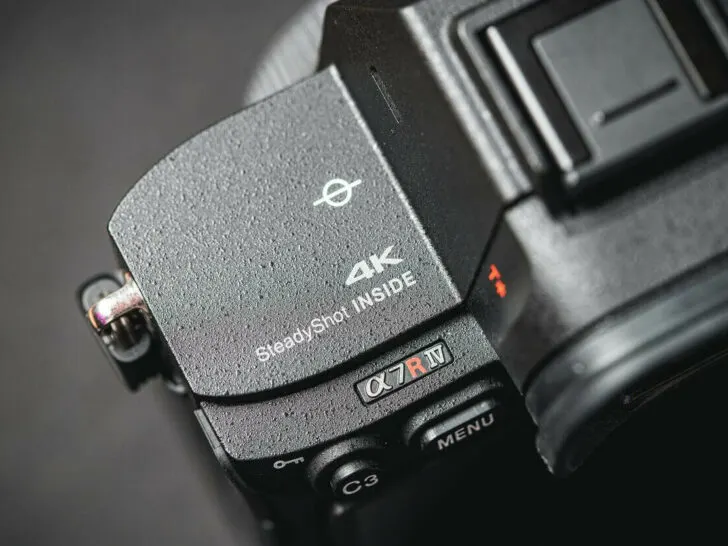The difference between 4K at 30 Hz and 4K at 60 Hz is big! 60 Hz is the standard refresh rate these days. Whereas you might find the 30hz refresh rate a bit slower than others.
30 Hz and 60 Hz are monitor or video refresh rates. Over the last few years, the resolution and frequency of television and monitors have greatly evolved. Watching films, videos, or clips from your phone on a 4K TV has become the new normal.
However, keeping up with all the different resolutions, frame rates, or refresh rates is difficult. This is why I’m here to help! In this article, I’ll discuss the differences between 4K at 30 Hz and 4K at 60 Hz.
So let’s dive right in!
Is 30hz Enough for 4k?
This depends on the HDMI you’re using. If you connect your computer to an HDMI 1.4 TV, you’re only limited to a resolution of 4K at 30 Hz.
On the other hand, if you want to get 4K at 60 Hz, you need a video card and HDMI 2.0.
Additionally, today televisions with 4K resolution have a refresh rate of a minimum of 30 Hz. Playing a movie on your 4K TV at this refresh rate might cause juddering.
This is because the display device will refresh faster than the movie’s frames. The images might lag, and the transition between scenes may also glitch.
Therefore, you might not enjoy watching a movie on a 4K TV with a 30 Hz refresh rate. From this perspective, 30 Hz might not be enough for 4K as the high-definition quality will be lost at this refresh rate.
However, TVs released today have a feature that matches the movie’s 24p playback. This is great news because it would greatly reduce the juddering.
Moreover, 30 Hz is a good enough refresh rate for a desktop setting. It’s not as debilitating to use as you may think it is.
You can easily use it for work without any interruption. However, anything outside of this can become a hindrance.
What is the Difference Between 4K at 30Hz and 60Hz?
As you know, 30 Hz and 60 Hz are the refresh rates of a monitor or a video. Refresh rates are the number of frames per second. A common rule of thumb is that the higher the refresh rate, the smoother the video stream.
Consequently, a video with 60 Hz will have a smoother stream than a video with only 30 Hz. However, your monitor should also be able to work at the refresh rate that your video is streaming at.
So basically, 4K is a resolution that portrays the number of pixels and aspect ratio of a video or a monitor. If you want to experience good quality, then a monitor should be capable of streaming in 4K.
A 4K resolution means that a monitor has 4,096 pixels horizontally. The refresh rates expressed as Hz, or frames per second, are two additional aspects of video quality that must be considered.
Generally, a video is a series of still images shown in rapid succession. So, a higher-quality video will have more frames per second. Frame rate is just the number of still images a device captures every second.
Understanding the Relationship Between FPS and Refresh Rate
On the other hand, a refresh rate refers to the quality of the display and the number of times it’s “refreshed” to receive data. A refresh rate of 30 Hz and 60 Hz means the screen can be redrawn 30 or 60 times every second. A more powerful display would have higher refresh rates.
Let’s look at how FPS and a refresh rate all come together. The FPS of a computer doesn’t affect the display’s refresh rate.
However, a monitor will not be able to display all frames if the FPS of your computer is higher than the refresh rate of the monitor. The refresh rate tends to limit the quality of the picture.
A notable difference is that 30 Hz is said to have a very slow response time and lags more than 60 Hz. In today’s world, 60 Hz is becoming more common and a minimum monitor requirement.
60 Hz is more than satisfactory for everything, even work. Whereas 30 Hz has a flickering effect due to its slow response time.
Which is Better, 4K 30Hz or 4K 60Hz?
If you’re looking for a new TV with a 4K resolution, then a 60 Hz refresh rate definitely has to be a better choice than a 30 Hz refresh rate.
This is because the 60 Hz TV will be able to play ultra high definition movies at a better quality and make your experience more worth it. 60 Hz has a smoother video stream compared to 30 Hz.
Furthermore, the 60 Hz refresh rate is definitely better than the 30 Hz flicker rate. On CRT screens, 30 Hz has a much lower standard. LCD and LED can disguise this flicker, but the effect remains.
A higher refresh rate also means that there will be less flicker screen and a better picture. This is why 60 Hz is so much better than 30 Hz.
Not only can 60 Hz play UHD movies, but most video games on PC and game consoles also have a minimum requirement of 60 Hz. This refresh rate also has a better response time, unlike 30 Hz, with a slow response.
Therefore, getting a 60 Hz monitor or display can work in your favor, as you can enjoy your video games without compromising load time.

Is 4k 30 Fps or 60 Fps Better?
Now you know that 60 Hz is better than 30 Hz regarding refresh rates. However, let’s look at which frames are better per second. A higher frame rate doesn’t necessarily mean the video’s quality will also be higher.
If the quality output produced is the same, then it doesn’t matter whether your video is 30 FPS or 60 FPS. Smoother video playback is possible when there are more frames per second.
30 FPS is the most popular frame rate. Videos on TV, news, and apps like Instagram use this frame rate. Even though this frame rate is more commonly used, a smoother motion is only possible with 60 FPS.
From a video or gaming perspective, a difference is that 4K at 60 FPS is much smoother than 4K at 30 FPS. Lower frame rates can be choppy, and higher frame rates look smoother.
This is why a frame rate of 60 FPS is far better because it can capture twice the amount of underlying data than a 30 FPS video. It removes unwanted blurring and can capture slow-motion shots.
Another advantage of using 60 FPS is that it can slow down a video while maintaining a high quality of slow motion. A 60 FPS video is usually slowed to 24 or 30 FPS after production. This helps achieve a smoother slow motion.
Moreover, cameras now offer a wide range of frame rates. Here’s a table explaining what effect can be achieved by using a specific frame rate:
| Frame Rate | Effect |
| 1-15 FPS | Commonly used for time-lapse. |
| 24 FPS | Known as the cinematic option, used by filmmakers. |
| 30 FPS | A format that is popular for live TV broadcasts. |
| 60 FPS | A popular choice for sports footage and live TV. |
| 120 FPS | Used for very slow-motion shots. |
Is 4K Worth It at 60Hz?
From a gaming perspective, a higher refresh rate is much more important than a higher resolution. This is because it makes fast-paced aiming and firing much more manageable. 60 Hz is able to provide tangible performance improvements.
The eye has a flicker fusion frequency of around 72 Hz at normal brightness. Therefore, all content will look better at 60 Hz.
Flicker effects and low refresh rates can be really irritating. Therefore, using a higher refresh rate would help avoid this problem.
Choosing the Right HDMI Version and Refresh Rate for Your Needs
A standard HDMI connection can support 4K 60 Hz. However, you’ll need at least the 2.0 version of HDMI. Most new laptops, TVs, and digital devices have HDMI 2.0 or 2.1.
If you want to watch a movie, you can keep the refresh rate to 60 Hz. You’ll be able to watch good-quality content without any stuttering or lagging.
It’s very beneficial for watching sports and games. 60 Hz is more than satisfactory for 4K.
However, it should be noted that people are slowly shifting towards 120 Hz now. A higher refresh rate is definitely much better.
While 60 Hz can provide a minimum refresh rate, 120 Hz is the best and most appropriate for users who are more demanding.

What is a Good Refresh Rate on a 4K TV?
The best refresh rate for a TV is 120 Hz. The TV’s refresh rate tells how many images it can show per second.
The standard refresh rate of a TV is either 50 Hz or 60 Hz. However, one should understand that the maximum native refresh rate of a flat-screen today is 120 Hz. This means that it can display 120 images every second.
Which is better for you, 120 Hz or 60 Hz, depending on your watching content. TVs that are 120 Hz are better for playing video games and watching 24 FPS content.
Although, a higher refresh rate shouldn’t be considered a good enough reason to spend more on an HDTV. This is because, for most movie content, you’ll probably want to keep the refresh rate at 60 Hz.
Take a quick look at this video comparing different refresh rates:
The Bottom Line
- The difference between 4K at 30 Hz and 4K at 60 Hz is significant. 60 Hz is the standard refresh rate for smoother video.
- The choice between 30 Hz and 60 Hz depends on your display’s capabilities and the content you want to watch.
- HDMI 2.0 is needed to achieve 4K at 60 Hz, whereas HDMI 1.4 is limited to 30 Hz.
- 30 Hz may result in juddering when playing movies on a 4K TV. It is due to the mismatch between the refresh rate and frame rate.
- 60 Hz offers a smoother video stream and less flicker than 30 Hz, making it a better choice for quality and comfort.
- Higher refresh rates, like 120 Hz, are becoming more common. And it is beneficial for gaming and fast-paced content.
- A good refresh rate for a 4K TV is typically 120 Hz, although 60 Hz is suitable for most movie content.
- 4K at 60 Hz provides smoother video playback. It also gives better gaming performance and a more enjoyable viewing experience.
I hope this article helped clarify the differences between various refresh rates and frames per second!
Other Articles
GFCI VS. GFI- A DETAILED COMPARISON

